Long Term Timelapse - A Case Study
Hotel Renovation
The Adrian hotels group decided to carry out a renovation to their Jardines de Nivaria hotel in Adeje, Tenerife. They hired me to make a long term timelapse of this renovation work. This included using drones and short conventional timelapse films. A hotel renovation timelapse needs a lot of forward planning to get the right results. The films were for their website and social media outlets. They goal was to keep staff and customers informed on the work.
The duration period of the timelapse shooting was six months. Various rooms, buildings, the swimming pool area, bars, restaurants and dining facilities all changed. Also, the front of the hotel received an upgrade too. The ‘La Cupula’ restaurant moved to the top floor, diners now had fabulous views of the swimming pool and sea.
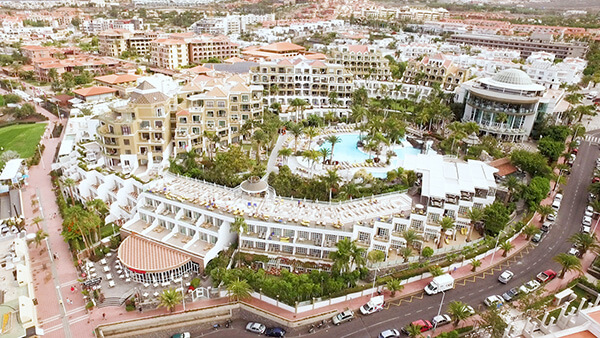
Planning
First of all, I met their team including the architect and the marketing manager. We walked around the entire hotel complex and they explained which areas were going to change. I made notes and took photos from possible locations where the cameras could be mounted.
Discussing the plans, locations and timings of the work was important to work out where cameras needed to be placed. I had to decide the shooting interval of each camera. We also discussed how long each camera would stay in a location before being moved to cover another stage of building.
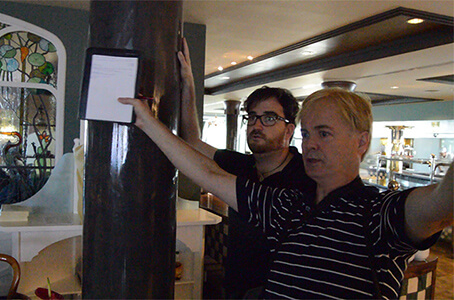
One of the biggest considerations was choosing a safe place for each camera. The architect knew what structural changes were to be made from tearing down walls and ceilings to the building of new structures. There was no point bolting a camera to a wall if it was to be knocked down three weeks later.
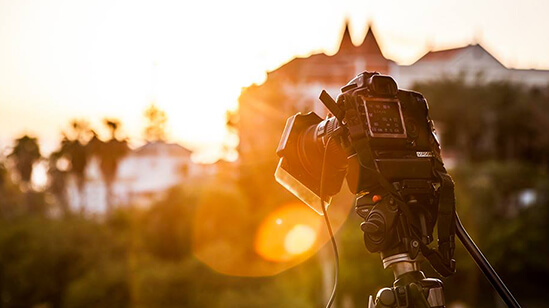
All on the same page
I therefore drew up rough plans and sketches with time intervals so we all knew where the cameras would be and for how long. This information was passed on to the foreman and workmen to make them aware of the cameras when working near them.
The cameras needed to be fixed in a safe place because there was always the chance they might be knocked or covered in paint or dust. Furthermore, they also had to be easily accessible to change batteries and memory cards.


Pigeons! They loved a new vantage point! They tend to know where the best places are as well. All the spots I chose seemed to be covered in pigeon poop! They certainly liked to use a camera as a new lookout perch, so deterrents were devised. A wire cage helped as well as nails positioned on top of the housing like a sea urchin.
Safety
I had to visit the site on a regular basis. A construction foreman was assigned to keep me safe. We toured the site, climbed ladders and scaffolding to get to each camera. This was to change batteries, download the images, reposition the cameras if necessary and set them running again. His help was invaluable. We quickly developed a routine. Building sites are naturally dangerous places with all sorts of unseen hazards waiting for the unwary. On initial installation, I had to set the focus of the camera whilst viewing the scene via the laptop screen wearing a hardhat under a large black cloth to block out the sun so I could see the screen, while I was concentrating on that, the foreman kept me in safe mode.
Interval timing
The main cameras were set to take a photo every ten seconds because it’s alway better to have too many jpg’s than not enough. One of the main events was the fixing of the prefabricated roof girders for the new restaurant using cranes. I had two cameras on this action clicking a frame every ten seconds. The interval needed to be that fast as swinging the roof structures in to position happened relatively quickly even with heavy structures like the girders.
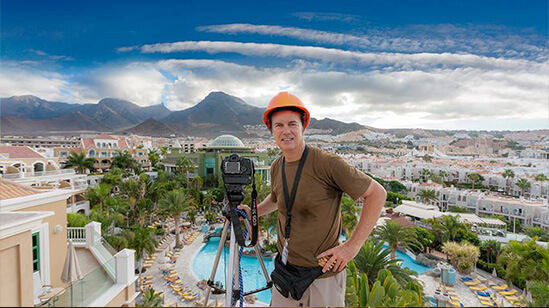
Seven cameras were used in various fixed positions inside and outside the hotel. Three additional Canon 5DII DSLR cameras were also brought in to record events lasting less than an hour or two. Examples being the clearing of tables and chairs or knocking down a wall. GoPro’s were used as well. The track of the sun was considered so the cameras didn’t point directly in to the sun therefore bleaching out the image.
Flexibility
Long term timelapse needs coordination and communication at all times. Sometimes, it wasnt known when particular building work would take place as plans changed all the time. It was important to have a contact to keep information up to date. An example was the draining and refilling the swimming pool. It was known that it would happen, but the exact date wasn’t. Eventually, I was informed the pool would start to fill at first light the next day. I had to go to the site immediately and set the cameras to come on early the following morning. They captured the pool filling up which lasted around eight hours.
You need to know how to frame a shot so it records all the action. This includes visualising where a new building or structure will be in the future so the camera is already filming the empty area. The subject then grows in to the frame. This avoids the final sequence jerking due to reframing the scene if the camera had to be adjusted at the last moment. Of course, if you have a really wide angle lens, then this helps matters enormously.
Long term timelapse is all about continuity to give a smooth rendition of the transformation. Shooting from one point is ok, but it can lead to a boring film. The fact I had seven static cameras and three mobile ones meant I had viewpoints from many different angles and positions. This gave me more choices in editing to make the film visually interesting.

Drone Timelapse
Using drones provided a lot of dynamic interest. Before the work even started, a drone was used to film all the various buildings and structures which would be knocked down, reformed or built from scratch. Some shots were static, rather like an aerial tripod and filmed for twenty seconds. Others were slow tracking shots, pull-away or fly-overs. These shots were then repeated after all the renovation work was completed. The sequences were then blended together to show the ‘before and after’ transformation of the buildings.
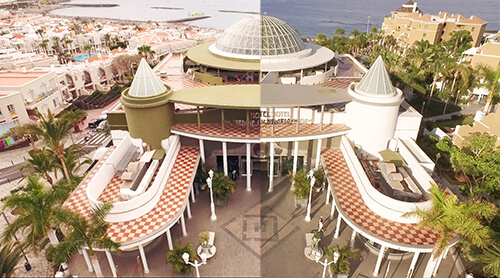

Drone timelapsing is difficult, even with capturing GPS information. We flew POV tracks, slider tracks and static point. Returning six months later to fly the exact same shots needed teamwork!
Timelapse Music
Choosing the right music is important for any film. The tempo and construction of the piece acted as the backbone to the delivery of the timelapse. therefore, having music which contains lots of crescendos and dynamic breaks are the best. These changes in the track, provide the natural editing points to change views and do transitions. Also, if the main core of the track is a repetition, it makes it easier to edit the length of the track if it is too short or too long. Adobe Audition is particularly good for altering track lengths.
Shadow Flickering
One distraction in the final film can be caused by the movement of shadows. It can make watching hard work due to the constant flickering as the shadows move across the scene. If a timelapse is over a long enough period, you can take a short sequence from the same part of the day of every day. This means that any harsh shadows stay in the same place. Blending the images helps to achieve a smoother sequence which is easier on the eye. This technique was used to capture the grass growing from seed.
Long Term Timelapse Systems
There are various camera systems to capture long term timelapse action depending on the budget. Some rely on batteries which need to be replaced at regular intervals including the memory cards. More expensive solutions can be fully integrated systems powered by solar panels where images are recorded and uploaded to a central server overnight via 3G or 4G WiFi network. Thumbnail previews can be viewed on a webpage to show the progress of the work and also to check the cameras are working properly. You can also change the camera settings via a phone or laptop. The cameras can capture images at over 4K resolutions which allows for very creative editing and the use of visual techniques (Ken Burns) to produce a dynamic looking timelapse.
Timelapse Editing
Editing is where the most work is carried out. Fitting the giant jigsaw together was a challenge, but made easier by planning ahead. The cameras produced over 123,ooo jpg’s a week which all needed to be processed. As a result, this meant cutting out periods of inactivity such as lunch breaks, tea breaks, inactivity prior and after the working day, during a weekend or when work couldn’t be carried out for one reason or another.
Finished Timelapse
Here is one of the timelapse films used to keep people up to date on the progress. It shows the roof girder sections of the new La Cupula restaurant being hoisted in to position. Work in the restaurants inside the hotel is shown as well as digging foundations, concrete laying, and erecting wall panels. The sequences were filmed over a period of four weeks.
